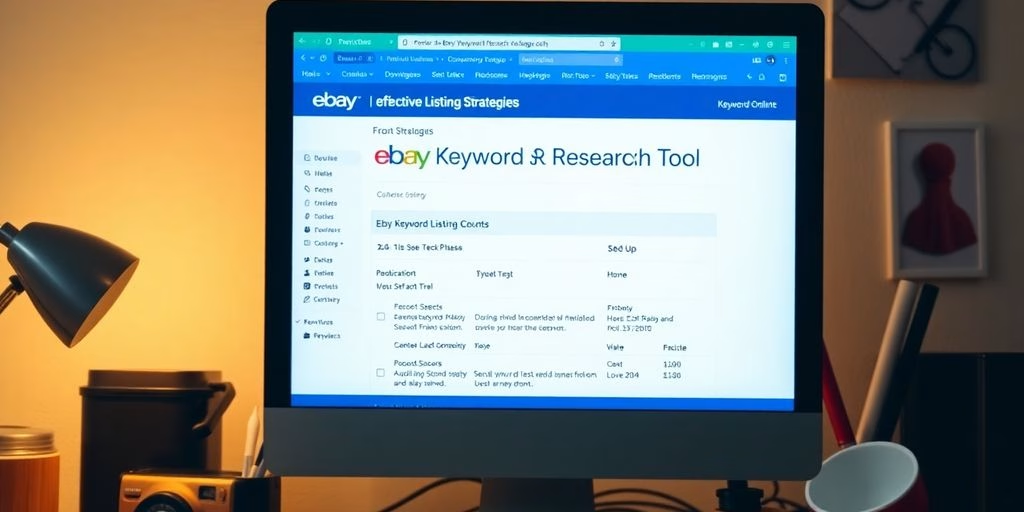Mastering the use of related keywords is crucial for expanding your digital presence and ensuring your content resonates with both search engines and users. This article delves into the strategic application of related keywords to enhance your SEO efforts, providing insights into uncovering valuable keyword opportunities, optimizing keyword placement, and adapting to the latest market trends.
Key Takeaways on Related Keywords
- Utilize keyword research tools to discover high-potential related keywords and strategically map them to your content.
- Group keywords categorically and maintain an optimal keyword density of 2-3% to improve content harmony and SEO impact.
- Incorporate long-tail keywords to target specific queries, reduce competition, and increase your content’s visibility.
- Practice restraint with exact match anchor text in internal linking to avoid over-optimization and potential ranking penalties.
- Regularly update your keyword strategy to align with emerging trends such as AI, voice search, and local SEO analytics.
Unearthing Related Keyword Goldmines

Digging Deeper with Related Keywords Research Tools
Embarking on the quest for the perfect related keywords is akin to seeking out the most lustrous gems in a vast mine. It’s not just about scratching the surface; it’s about delving into the depths with the right tools in hand. Keyword research is essential for SEO success. With a plethora of tools at your disposal, from Google’s Keyword Planner to more advanced AI-powered platforms, the key is to use these instruments to unearth terms that resonate with your audience and search engines alike.
- Leverage keyword research tools like Google’s Keyword Planner for high-level monthly searches.
- Filter for low and medium-competition long-tail keywords.
- Identify a primary keyword or keyword phrase for each page.
- Build out related secondary long-tail keywords for added visibility.
Remember, it’s not just about finding words; it’s about discovering the language of your potential visitors. By matching keywords to searcher intent, you ensure that your content doesn’t just attract eyes, but the right eyes—those of engaged users ripe for conversion. Avoid common mistakes and optimize content for both search engines and users to strike gold in the SEO landscape.
Mapping the Related Keywords Treasure Trove
Once you’ve dug up a list of potential keywords, it’s time to map out the treasure trove. Topical maps branch out from head keywords into related semantic long-tails, exploring sub-topics in depth and establishing topical authority. This is where you transform a list into a strategic asset.
Topical mapping plays a key role by illustrating how different keywords are connected and grouped by intent. It’s like creating a visual mind map that not only guides content creation but also organizes it into a clear hierarchy. Here’s how to get started:
- Identify your head keywords and list them down.
- Branch out to find semantic long-tails and related sub-topics.
- Group keywords by search intent to align with user expectations.
- Analyze competitors’ keyword strategies to find gaps and opportunities.
Choosing relevant, high search volume, low competition keywords aligned with user intent is key to SEO success. Like a tightrope walk, finding the balance leads to substantial rewards.
Remember, related keyword research sets the roadmap for your entire strategy. It involves identifying and analyzing keywords that will guide your planning, all relating to your buyer’s journey. To substantiate your best opportunities, gather data around search volumes, current rankings, keyword difficulty, SERP landscapes, and more.
Avoiding the Related Keywords Stuffing Quicksand
It is easy to fall into the trap of keyword stuffing—but this is one quicksand you want to sidestep. Avoid keyword stuffing to maintain content quality, SEO success, and user experience. Instead, focus on natural keyword integration and on-page optimization for engaging content that resonates with both search engines and human readers.
By weaving keywords into your content with finesse, you create a tapestry that’s both visually appealing to search engines and inviting to visitors.
Here’s a quick checklist to keep your content on solid ground:
- Ensure a natural flow of language
- Integrate keywords contextually
- Monitor keyword density to avoid overuse
- Update old content to refresh keyword relevance
Remember, the goal is to strike a balance where your content is informative and enjoyable, not just a vessel for keywords. By doing so, you’ll not only dodge the penalties associated with keyword stuffing but also enhance the user experience.
The Art of Keyword Grouping

Categorizing Keywords for Content Harmony
Each keyword plays a vital role, and categorizing them is like arranging the perfect ensemble for content harmony. Strategically integrate long-tail keywords in titles, headers, meta descriptions, and content to hit the high notes of SEO success. Here’s how to conduct your keyword orchestra:
- Informational: Educate with keywords that answer the ‘how-tos’ and ‘what-ifs’.
- Navigational: Guide users with keywords that lead directly to your services or products.
- Transactional: Convert with keywords that signal the intent to purchase or engage.
Aligning keywords to user intent is like tuning your instruments; it ensures your content resonates with your audience’s search queries and expectations. Remember, the goal is to create topic clusters that not only enchant search engines but also serenade your users with relevance and value.
Before you sprinkle your content with keywords, dance to the rhythm of moderation and natural flow. Keep your keyword density balanced and your content’s readability in tune.
By sorting your keywords into these harmonious categories, you’re not just optimizing for search engines; you’re composing a masterpiece that will captivate and convert your audience.
Strategic Placement for Maximum Impact
When it comes to SEO, where you plant your keywords is just as crucial as what you plant. Strategically place keywords for SEO success, ensuring they naturally integrate into your content. Start with the page title and headers, as these are prime real estate for your targeted terms. But don’t forget the anchor text links and surrounding copy, where keywords can bloom into higher rankings.
- Use long-tail keywords for niche markets to capture a more engaged audience.
- Optimize images with relevant keywords to enhance both user experience and SEO.
- Unearth valuable keywords through meticulous research and competitor analysis, laying the groundwork for a robust SEO strategy.
Remember, the goal is not to stuff your content with keywords but to weave them into your narrative seamlessly. This approach not only pleases search engines but also resonates with your readers, striking the perfect balance between visibility and readability.
Now, let’s get practical. Identify your main keyword targets and the deserving pages. Implement your strategy step-by-step, from research to monitoring, to ensure continual improvement. Advanced SEO tactics, like semantic analysis and competitor keyword mining, enhance content relevance and reveal audience behavior insights for strategic content creation.
The Balancing Act of Keyword Density
Keyword density is the tightrope walker, maintaining a delicate balance high above the ground. Keep your keyword density around the sweet spot of 1-3%; any higher and you might just fall into the keyword stuffing pit. Remember, it’s not just about avoiding the fall; it’s about performing with grace. Here’s how to stay balanced:
- Moderation: Aim for a keyword density that doesn’t trigger alarms. Too much, and search engines will smell the stuffing.
- Value: Prioritize engaging content that provides value. Keywords are the seasoning, not the main course.
- Natural: Let keywords flow in a conversational rhythm. Forcing them into your content is like wearing clown shoes on a tightrope—it just doesn’t work.
- Diversity: Mix in variations and long-tail keywords to keep your act fresh and appealing.
By focusing on these elements, you’ll ensure that your content is not only SEO-friendly but also a joy to read. After all, what’s the point of drawing in an audience if you can’t keep them captivated?
Strategically use long-tail keywords in titles, headers, meta descriptions, and body text for SEO. Create topic clusters with pillar and cluster content to enhance user experience and site authority. While keyword density isn’t a ranking factor, it still plays a valuable role in crafting well-balanced, SEO-friendly content.
Long-Tail Keywords: The SEO Secret Weapon

Expanding Your Reach with Long-Tail Variations
When it comes to SEO, the devil is in the details—and the details are often found in long-tail keywords. These are the more specific, often less competitive phrases that can drive targeted traffic to your site. Boldly embracing long-tail variations can significantly expand your reach and connect you with the audience that is actively searching for what you offer.
To effectively leverage long-tail keywords, consider these steps:
- Leverage keyword research tools to uncover new relevant phrases.
- Filter for low and medium-competition keywords to avoid the high-traffic battlegrounds.
- Identify a primary keyword phrase for each page, then build out related secondary long-tail keywords for added visibility.
Remember, it’s not about having a multitude of keywords, but the right keywords that resonate with your audience’s search intent.
By strategically working these keywords into your content—be it through a blog post title, URLs, or even image alt text—you’re not only optimizing for search engines but also ensuring your pages are primed to rank for those specific terms. It’s a meticulous process, but one that reaps long-term organic visibility and relevance for searchers.
Filtering Through the Competition
Long-tail keywords are the savvy sailor’s secret map to less charted territories. By focusing on these specific phrases, you can navigate away from the crowded waters of highly competitive keywords. It’s not just about finding the right keywords; it’s about understanding the landscape of competition. Here’s a simple strategy to filter through the competition and find your niche:
- Conduct a thorough competitive analysis to see what keywords your rivals are targeting.
- Use keyword research tools to uncover low-competition long-tail keywords.
- Analyze your competitors’ links to identify gaps in their strategies.
- Assess the performance of your competitors’ keywords and look for opportunities.
Remember, the goal is to outsmart your competitors by targeting specific, less competitive keywords that still have significant search volume.
Once you’ve identified these golden opportunities, prioritize them in your SEO strategy. Tools like SEMRush and SE Ranking can be invaluable in this quest, allowing you to enter competitors’ domains and discover the treasure trove of keywords that drive traffic to their sites. With this knowledge, you can refine your approach and set sail for success.
Incorporating Long-Tails for Enhanced Visibility
Don’toverlook the power of long-tail keywords. These are your secret arsenal for targeting niche markets and capturing traffic that your competitors might miss. Incorporating long-tails into your content can significantly enhance your site’s visibility and improve your chances of ranking for specific, targeted queries.
To effectively weave long-tails into your content, consider these steps:
- Identify your primary keyword and use tools like Google Suggest to uncover related long-tail variations.
- Group these long-tails into relevant categories to maintain content harmony and focus.
- Integrate long-tails naturally within your content, ensuring they align with user search intent and add value to your readers.
Remember, the goal is not to stuff your content with keywords, but to enrich it in a way that resonates with both search engines and human readers.
By strategically placing long-tails in key areas of your content—such as titles, headings, and meta descriptions—you can create a web of relevance that search engines can’t help but notice. And with the right balance, you’ll keep your readers engaged without falling into the trap of over-optimization.
Navigating the Nuances of Internal Linking

The Delicate Dance of Exact Match Anchors
Navigating the world of SEO is akin to a ballet; every step must be precise and every move, intentional. When it comes to exact match anchors, the choreography gets intricate. By definition, exact match text anchors contribute the most value to a page’s position in SERPs. Yet, like a seasoned dancer, one must know when to hold back to avoid the dreaded over-optimization penalty.
Italics and subtlety are your friends here. Instead of hammering down the same keyword phrase, consider a pas de deux with partial keyword matches. This approach not only adds variety but also aligns with the natural flow of language, much like a fluid dance sequence. Here’s a quick step-by-step to ensure your anchors don’t weigh you down:
- Begin with your primary keyword, but don’t cling to it.
- Introduce related terms and synonyms to add depth.
- Use variations to reflect the diverse ways people search.
- Keep an eye on keyword density; it should never feel forced.
Remember, the goal is to attract visitors with specific search intent without raising any red flags. A balanced approach serves both search engines and human audiences, ensuring your SEO performance is en pointe.
Internal Linking for Related Keywords
Think of your website as a bustling city and your pages as the intricate web of streets within it. Internal linking is the GPS system guiding both users and search engines through your urban sprawl of content. By linking internally, you’re not just creating a navigable city; you’re also boosting the SEO vitality of your lesser-known districts.
Here’s what happens when you link internally:
- You help new pages get discovered by search engines, laying down a crawl path to these fresh locales.
- You pass link authority between your pages, akin to sharing the city’s energy to illuminate dimly lit areas.
- You help search engines understand what a page is about, ensuring that the right neighborhoods are highlighted for the right visitors.
To go further, consider adding long-tail keywords to your content. This strategy is like opening new boutiques in various neighborhoods, each tailored to the local crowd, increasing your city’s overall appeal.
Remember, internal linking isn’t just about creating connections; it’s about creating meaningful pathways that enhance the user experience and strengthen your site’s SEO framework. For a deep dive into the mechanics of internal linking, consider resources like Ahrefs’ detailed guides or Google’s SEO Starter Guide.
The Perils of Over-Optimization
In the quest for SEO dominance, it’s easy to fall into the trap of over-optimization. Keyword stuffing is not just frowned upon; it’s a fast track to the naughty corner of search engines. Like a chef who over-salts a dish, too many keywords can spoil your content’s flavor, leaving a bitter taste in the algorithm’s mouth.
Remember, it’s not about the number of keywords, but the quality of their integration.
To avoid the SEO faux pas of over-optimization, consider these points:
- Ensure natural keyword integration that flows with the content.
- Focus on on-page optimization that enhances user experience.
- Craft unique meta titles and descriptions that capture the essence of your pages.
By steering clear of these common pitfalls, you’ll maintain a healthy balance between optimization and readability, ensuring your content is both discoverable and delightful. After all, the goal is to engage humans, not just algorithms. And when it comes to SEO, sometimes less is more.
Evolving Your Keyword Strategy with Market Trends

Adapting to AI and Voice Search
As the digital landscape evolves, so too must our SEO strategies. Voice search optimization is no longer a futuristic concept; it’s a critical component of modern SEO. With the rise of smart speakers and AI assistants, keywords are getting a makeover. It’s not just about what people type, but also about what they speak into existence.
- Understand the nuances of conversational language
- Optimize for questions and complete sentences
- Embrace the long-tail keywords that mimic natural speech
By focusing on these elements, you’re not just playing the SEO game; you’re setting the stage for a standing ovation in the search engine theater.
Remember, AI doesn’t just understand keywords; it grasps context. Use Cutting-Edge AI to analyze search patterns and user behavior, crafting content that’s as smart as the technology querying it. The impact of voice search on keyword research is significant, and businesses that adapt swiftly will likely lead the pack.
Keeping Pace with Local SEO
Local businesses have a unique card to play: the locality advantage. Local SEO strategies boost local business visibility by tapping into the community’s pulse. Imagine your business popping up when someone searches for ‘best coffee in Little Italy’ or ‘top-rated plumbers in Shoreditch.’ It’s about being the big fish in your local pond.
- Utilize neighborhood nicknames in your content to resonate with locals.
- Optimize your Google My Business profile for maximum exposure.
- Create content that celebrates local events or landmarks.
- Get listed in local directories to widen your net.
- Monitor rankings with dedicated tracking tools to stay ahead.
Remember, local SEO isn’t just about being seen; it’s about being seen by the right people at the right time. When you align your online presence with local searches, you’re not just on the map; you’re on their radar.
As the digital landscape shifts, so should your keyword strategy. The title ‘Local SEO: All-in-One Guide to Improve Your Local Rankings’ isn’t just catchy; it’s a clarion call to action. Start by finding high-volume local keywords that your neighbors are using to discover services like yours. Then, weave these keywords into the fabric of your online identity, ensuring they’re as much a part of your brand as your local reputation.
Analytics: The Compass for Keyword Optimization
Analytics is your North Star, guiding you through the murky waters of keyword optimization. Boldly navigate your strategy by analyzing organic keyword data in Google Analytics 4, where you can unearth insights from the ‘Queries’ and ‘Google organic search traffic‘ reports. These reports are treasure maps, revealing the X marks the spot for your content’s success.
- Install Google Analytics to identify which terms drive traffic and conversions, indicating suitable fits deserving more focus.
- Check the Search Console to pinpoint pages ranking well for sought-after search queries you can optimise further to move up.
- Leverage tools highlighting keyword usage on-page to ensure proper placement in page title, body text, alt texts, etc.
By staying on top of analytics and regularly tuning keyword integration, you can swiftly react to algorithm shifts and searcher tendencies, keeping your search ranking and traffic on an upward trajectory.
Remember, AI-powered keyword discovery and competitor keyword analysis are revolutionizing SEO strategy. Identify trends, user intent, and content gaps to enhance search visibility and user engagement. Don’t be afraid to test new keyword variations or shift focus from lagging search terms to new opportunities, and set reminders for reviewing reports and pages monthly to check opportunities for improving existing keyword targeting.
In today’s fast-paced digital marketplace, staying ahead of the curve means constantly adapting your keyword strategy to align with evolving market trends. Don’t let your business fall behind—visit our website to discover how our expert insights can help you refine your approach and capture the attention of your target audience. Take the first step towards dynamic online growth and contact us today!
Conclusions
As we’ve journeyed through the labyrinth of SEO, we’ve uncovered the treasure trove of related keywords and long-tail phrases that can catapult your content to stardom in the search engine galaxy. Remember, it’s not just about the main act; the supporting cast of related terms plays a pivotal role in your SEO saga. Group them, map them, and sprinkle them with a dash of strategic placement to make your pages the belle of the Google ball.
Keep the keyword density in check—think of it as the SEO waltz, where every step is measured and every twirl counts. And don’t forget, while exact match keywords may seem like the dashing hero, they can turn villainous if overused. So, dance with a variety of terms, and let your content waltz gracefully through the ranks. Now, go forth and optimize with wisdom and wit, and may your pages live happily ever after in the land of top search results!
FAQs
How can I find high-potential related keywords for my SEO strategy?
Start by using keyword research tools like Google’s Keyword Planner to identify relevant keywords with high search potential. Filter for low and medium-competition long-tail keywords to avoid targeting overly saturated terms.
What is the recommended keyword density for SEO?
The best practice for SEO is to keep keyword density around 2-3% of the total word count. This helps maintain readability while optimizing for search engines.
How should I incorporate long-tail keywords into my content?
Incorporate long-tail keywords into parts of your copy that search engines weigh heavily, such as post titles, URLs, headings, and image alt text. Adding paragraphs containing these keywords can help you rank for additional search queries.
What is the importance of keyword grouping in related keywords?
Keyword grouping involves categorizing keywords into sets that define the core topics for each page. This helps in optimizing specific pages for a coherent set of terms and enhances content harmony.
How can I avoid over-optimizing my pages for a specific keyword?
Limit the use of exact match keywords, especially in internal linking. Use a mix of related terms and ensure a natural flow of content to avoid the perils of keyword stuffing and over-optimization.
How should I adapt my related keyword strategy to keep up with SEO market trends?
Stay informed about trends such as AI, voice search, and local SEO, and regularly analyze your keyword performance to adapt your strategy. Use analytics as a compass to guide your keyword optimization and align with user intent.

![A Comprehensive Guide to Google Play Console Pricing [n8n]](https://cworks.id/wp-content/uploads/2025/09/cover-image-24622.avif)
![Understanding the Google Play Console Price: What Developers Need to Know [arvow]](https://cworks.id/wp-content/uploads/2025/05/4755037cthumbnail.avif)






































































































